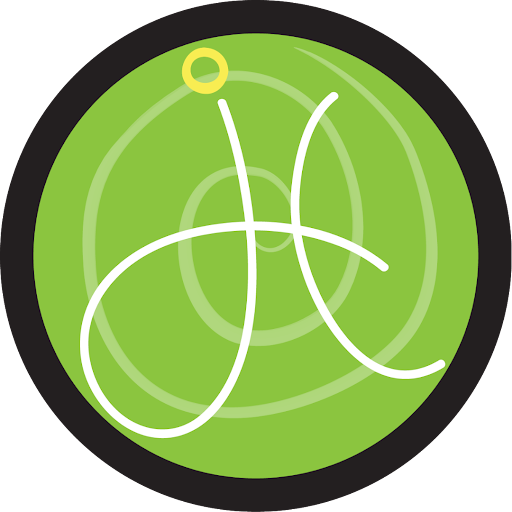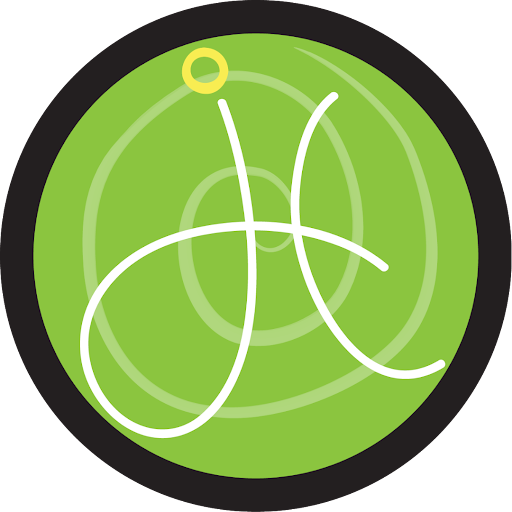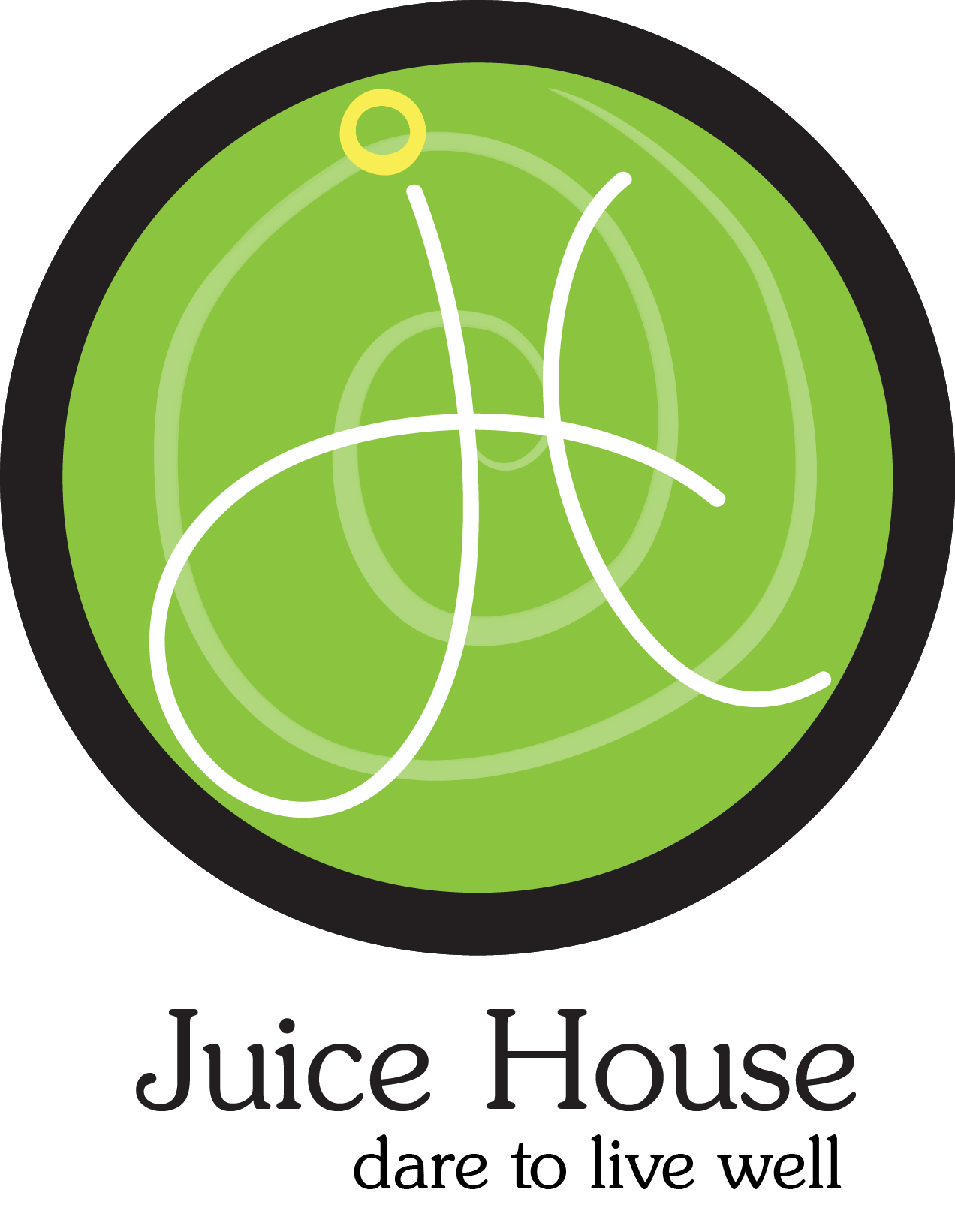The University of Toledo has many hidden gems located throughout its campus. While students may not know about some of these locations, all it takes is enough people to spread awareness of what goes on there or why they exist. One such place, the Typography Lab, spells out to students what they do there — literally, in this case.
“The Typography Lab is a place to make handmade books and to study handmade books,” Dr. Timothy Geiger, a professor in the Department of English Language and Literature and the director of the Typography Lab, said. “Students get a background in the traditional typesetting techniques, and they also get a little bit of background in some more modern graphic design using Macintosh computers with [Adobe] Indesign programming.”
The Typography Lab has been at the University of Toledo ever since Geiger joined the department as a faculty member, arriving with the university’s first printing press in 1998. Since 2008, it’s been housed in room 1310 of the Memorial Field House. Its unique place on campus mirrors Geiger’s own unique path into the field of typography.
“While I was a psychology major, I started taking creative writing classes, and that’s where I found out that I had a natural aptitude and a natural love for poetry,” Geiger said. “While I was studying poetry, I was also taking courses in typography which were offered through the English department. That’s where I first learned to set type and to hand print different works.”
Geiger used his background in poetry and typography to earn dual Master of Fine Arts degrees from the University of Alabama. He later bought a Vandercook Simple Precision 15 printing press to aid his studies. When Geiger decided to pursue teaching, he first taught at a college in Minnesota before eventually landing at the University of Toledo.
“When I came for the interview with Toledo and they found out that I made books, they were very interested in hiring me to teach those courses,” Geiger said. “As far as establishing the Typography Lab, that was by the grace of the English department. They’re the ones who had the foresight to think that this is something we could offer here that no other university in the state of Ohio can offer, which is courses in typography and courses in letterpress printing and book arts.”
Within the Typography Lab, Geiger teaches ENGL 3080, a course on the art and process of the book. Students taking the course explore the development of the book and the fields of typography and bookmaking through both study and creation.
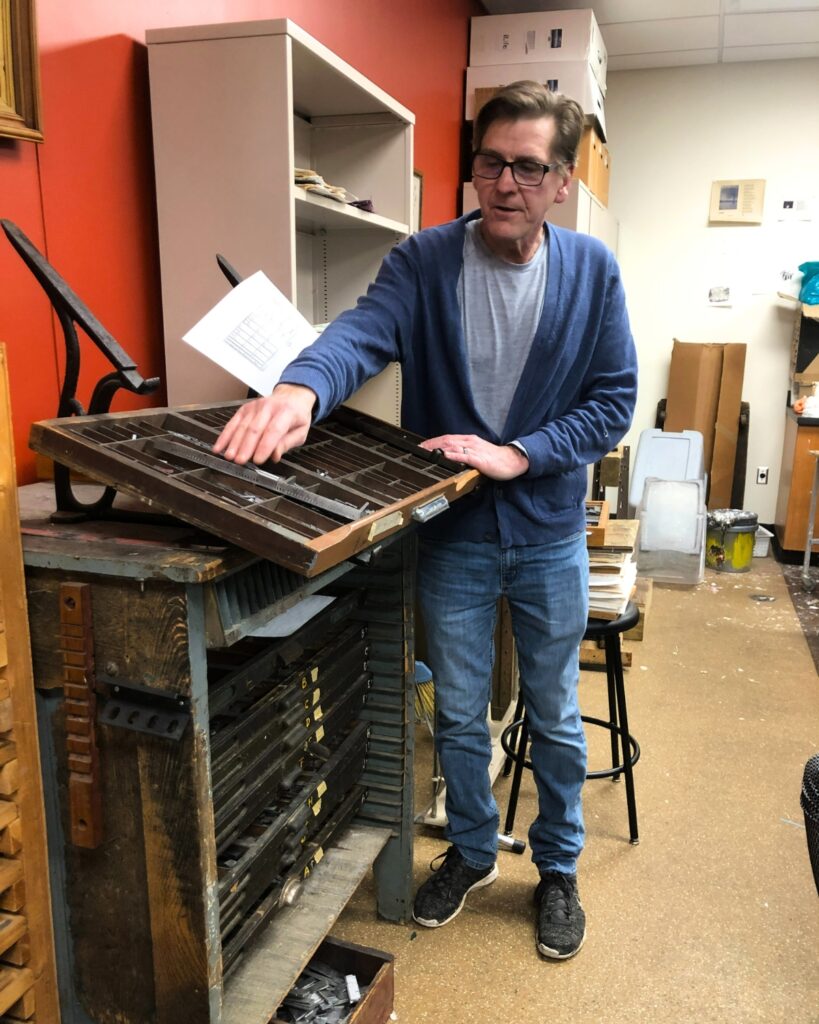
“It got structured into a three-unit course,” Geiger said. “The first is the history unit, looking at where books come from and tracing their development … and looking at different examples worldwide of how different cultures have interpreted the book. The second unit became all about printing, using the press, actually putting type to paper. The third unit became about the creation of a book — how to bind it, how to put the book together, how to illustrate it and decorate.”
The history unit explores how books have evolved over time — from cave paintings, tablets and scrolls in the early years, to the codex form of books and mass production through printing presses today. The course also incorporates a hands-on lab that allows students to use the unique tools available at the Typography Lab, including the printing press.
“This VanderCook Simple Precision 15 printing press is a cylinder press, meaning that it rolls across the top of the type and it impresses the paper into the type,” Geiger said. “There’s all kinds of inks that are used essentially from the three primary colors of the ink. We can mix any color that students might require.”
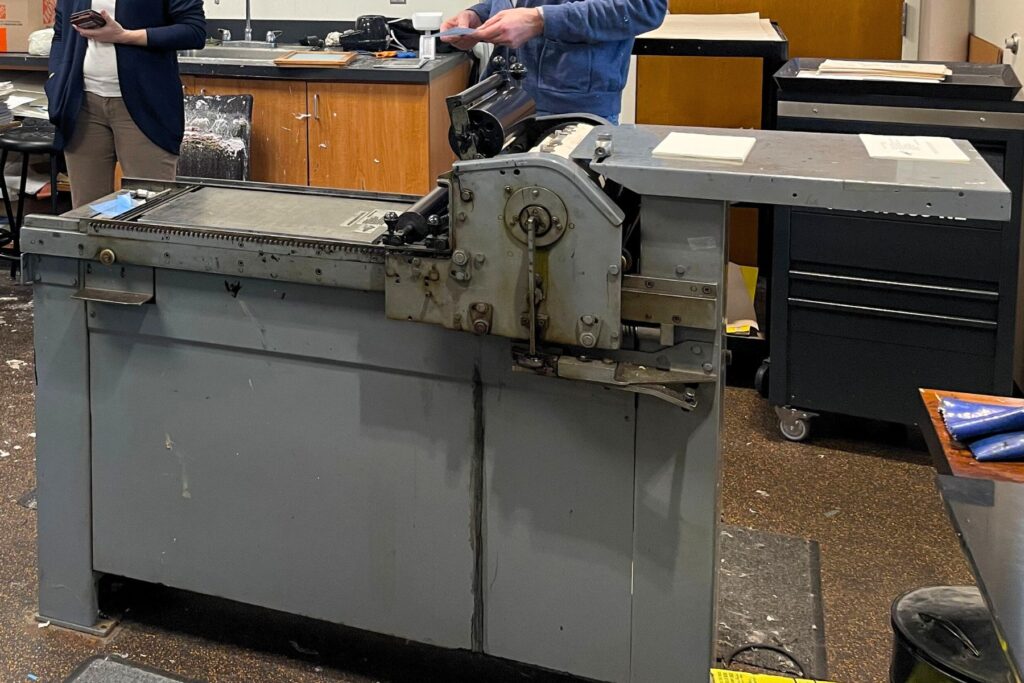
Students in the Typography Lab use specialized tools to imprint letters onto paper, such as lead type and photopolymer plates, as well as bookmaking methods including paper making and book binding.
“There’s all kinds of different tools. They’re just all kept stored in their little place and pulled out when we need them,” Geiger said.
All these tools and methods of creation are critical to the course’s most important project: a yearly book publication. Students in the class contact an author, acquire some of their work and create a book by collectively agreeing on the creative process. Since 1999, the course has produced a total of 32 books that vary in author, content and style.
“The first author I was able to contact was one of my all time favorite poets, Philip Levine … I asked him about the possibility of having a class print one of his books, and he was very excited about the idea. So he gave me a collection of some of his unpublished work and even a poem that was called “Coming Homeward from Toledo,” which was a new personal creation,” Geiger said. “In every one of those projects, the students get to choose the artwork, the typeface, the size of the book, the illustration, and it’s kind of a back and forth process with the author.”
The books that the Typography Lab makes are short and often under 24 pages. They’re also limited edition; around 100 copies of the book are made, and all students involved in the course get to receive a copy. While the author may eventually publish their work on a larger scale than the Typography Lab does, the limited edition nature of the books allows them to have a higher value.
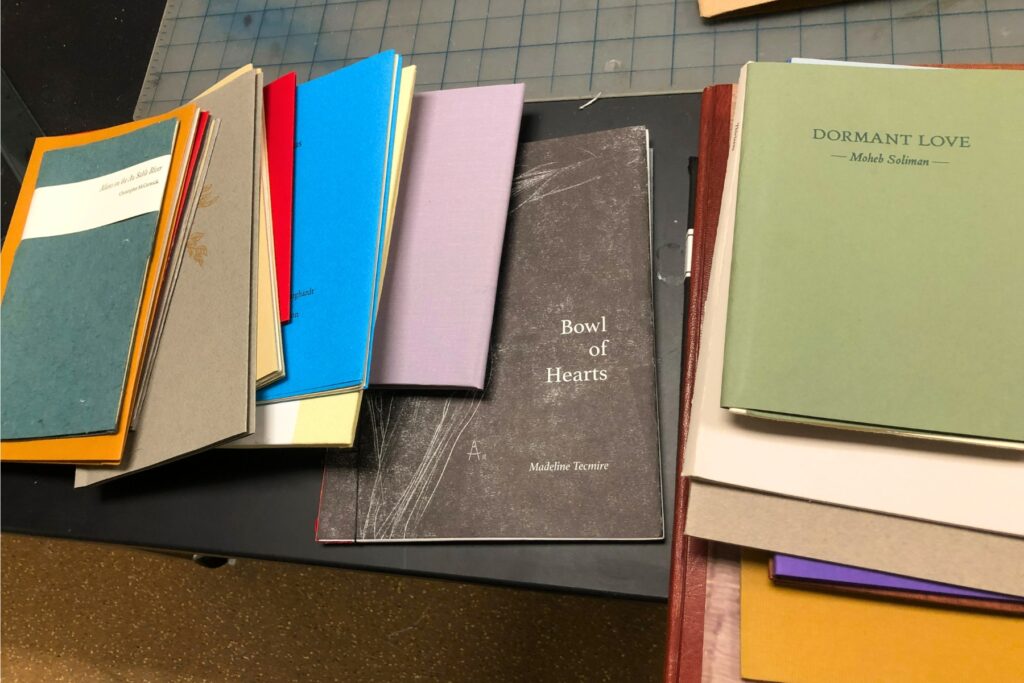
“The author is the one who sells the majority of the books. I have a couple of standing order patrons, people that collect books from the press, but mostly they’re major libraries around the country. A couple of book sellers that take copies as well,” Geiger said. “The majority of the books end up being sold by the author themselves at readings that they do. They’ll take the books from me and basically distribute them.”
Every book that the Typography Lab prints is unique. Some of the books may have binding structures that are different from those of typical books. Other books may have interesting content within them. Among the books the Typography Lab has printed are a bilingual book, a collaboration between three different poets and a book showcasing a poem that has been translated to and from a variety of languages. Throughout all of these projects, Geiger wants to ensure that those in the Art and Process of the Book course gain what he calls the “full bookmaking experience.”
“[Students] get to try their hand at all the different techniques in book arts — from paper decoration to book binding to paper making to printing. It’s important to me that they see the whole process of putting a book together, watching all of those individual segments of the book arts come together,” Geiger said. “The idea of us working on a collaborative project seemed to be the best way to do that.”

Students have responded positively to the Art and Process of the Book course. The course is taught every spring semester and is very popular — to the point that the course fills to maximum capacity nearly every time it’s offered.
“It always fills pretty quickly, and there’s always a waiting list for it. We’ve only got 20 seats in the classroom, so that’s kind of the max cap,” Geiger said.
Much of what’s used in the Typography Lab is older and is not used often today, but Geiger says that it’s still important to know how to operate them, create with them and innovate with them.
“The majority of the tools that we work with here are completely obsolete, outside of the practicing artists. So if you look at it from that perspective … all of those hand art techniques are still in existence,” Geiger said. “But for the most part, they’re done by practicing artists who have turned it into a craft, and they do it for years and years until they master it. All that I’m giving students a taste of it. The hope is that some of them might go on and keep studying the craft and get better at it.”
Another reason why Geiger considers the Typography Lab important is how books have been used across the world and throughout history to retain and spread knowledge.
“The thing that has made [education] possible throughout every society and culture is the book. Without books, we don’t have a culture, we don’t have knowledge,” Geiger said. “I think that having this space where students can come and get that insight into the past of the book and potentially what the future of the book is going to look like.”
The insight into the future of the book is especially important. The rise of artificial intelligence presents a potential evolution of the book, though it also takes away one of its most critical aspects: human experience. That’s where typography and making books by hand come in.
“With the advent of artificial intelligence, where we’re shirking our duties to create art and to create even knowledge, I think that this process of being able to hold something in your hands, being able to make something in your hands is vitally important,” Geiger said.
Regardless of what the future of the book is, one thing is certain: books are an art. Throughout history different forms of the book have been created, and innovations are happening all the time. There are countless ways to make a book, and that’s reflected in the course’s book publication project.
“There’s just so many different things to think about that every single project is something new, even though it’s the same thing year after year,” Geiger said. “That’s the way it is with art. Even though we keep making the same art, it’s always different.”
